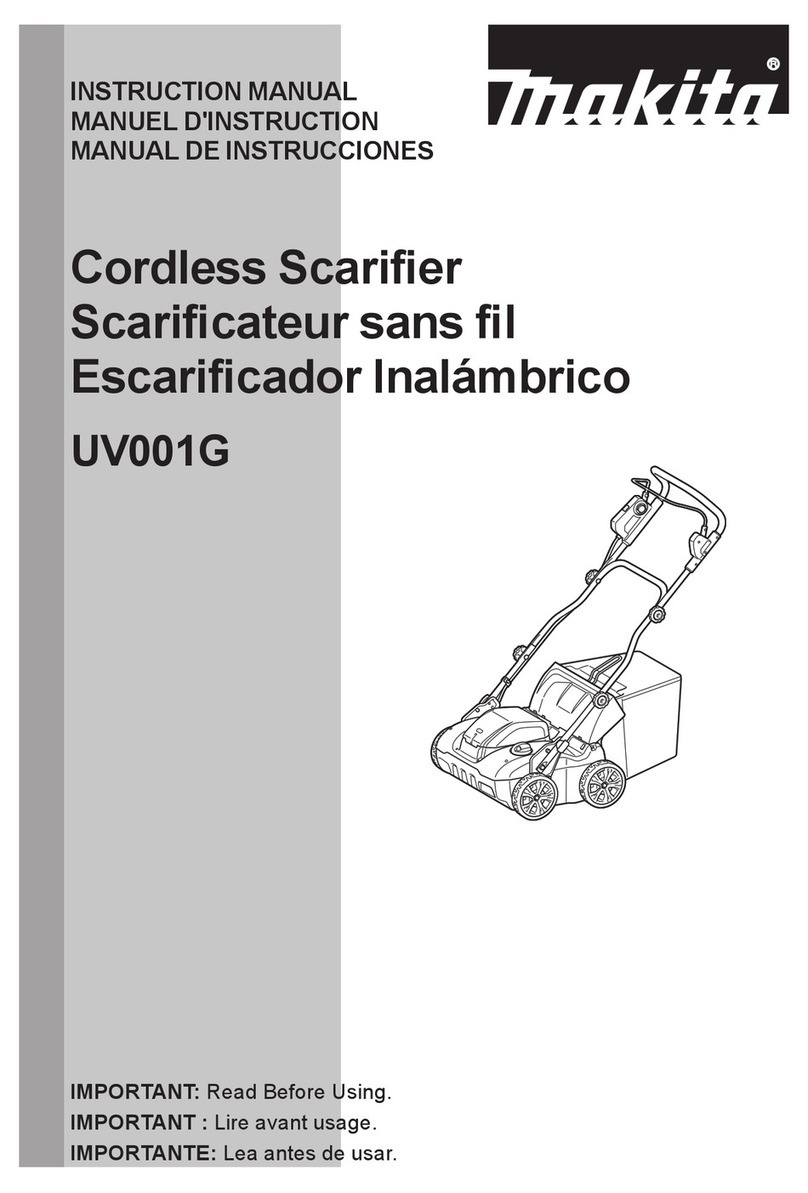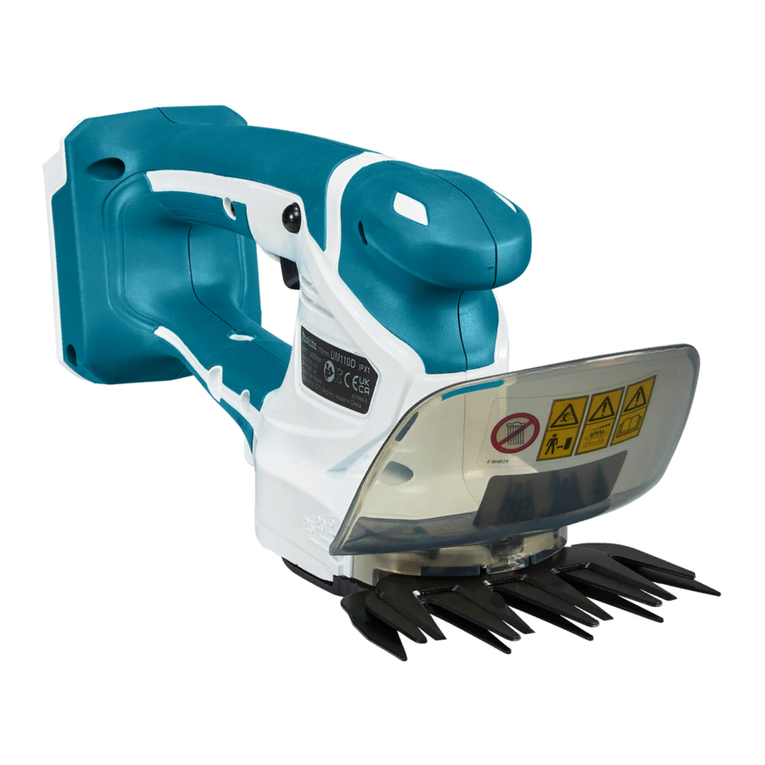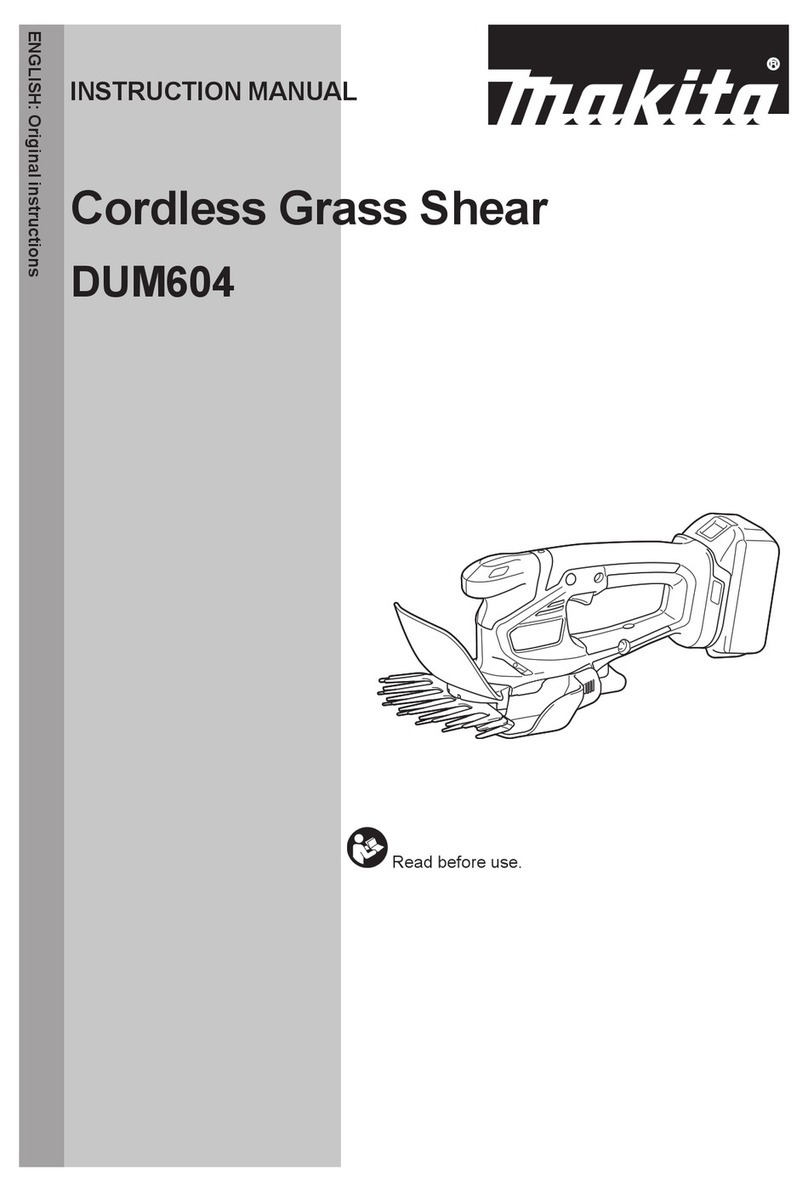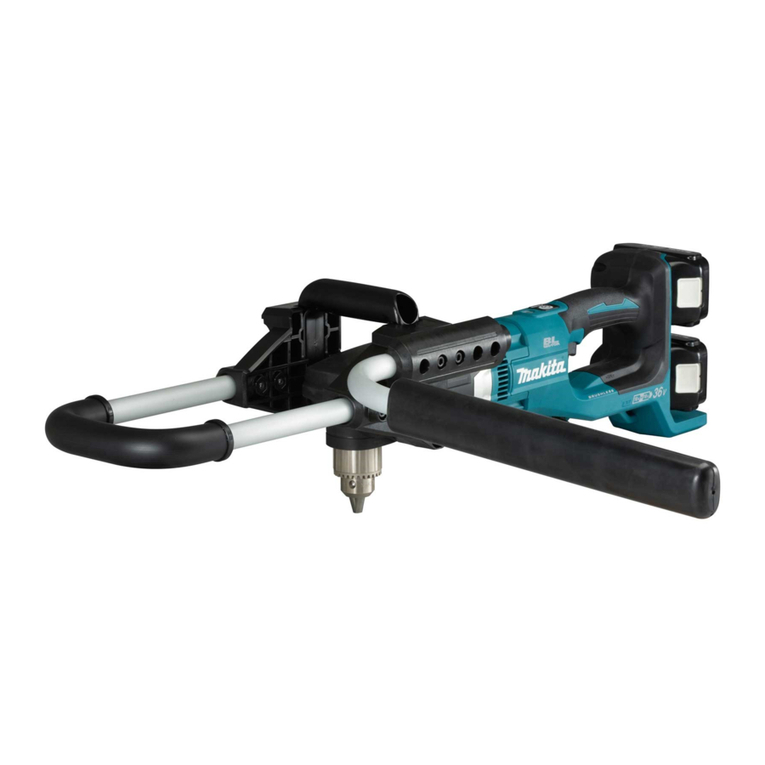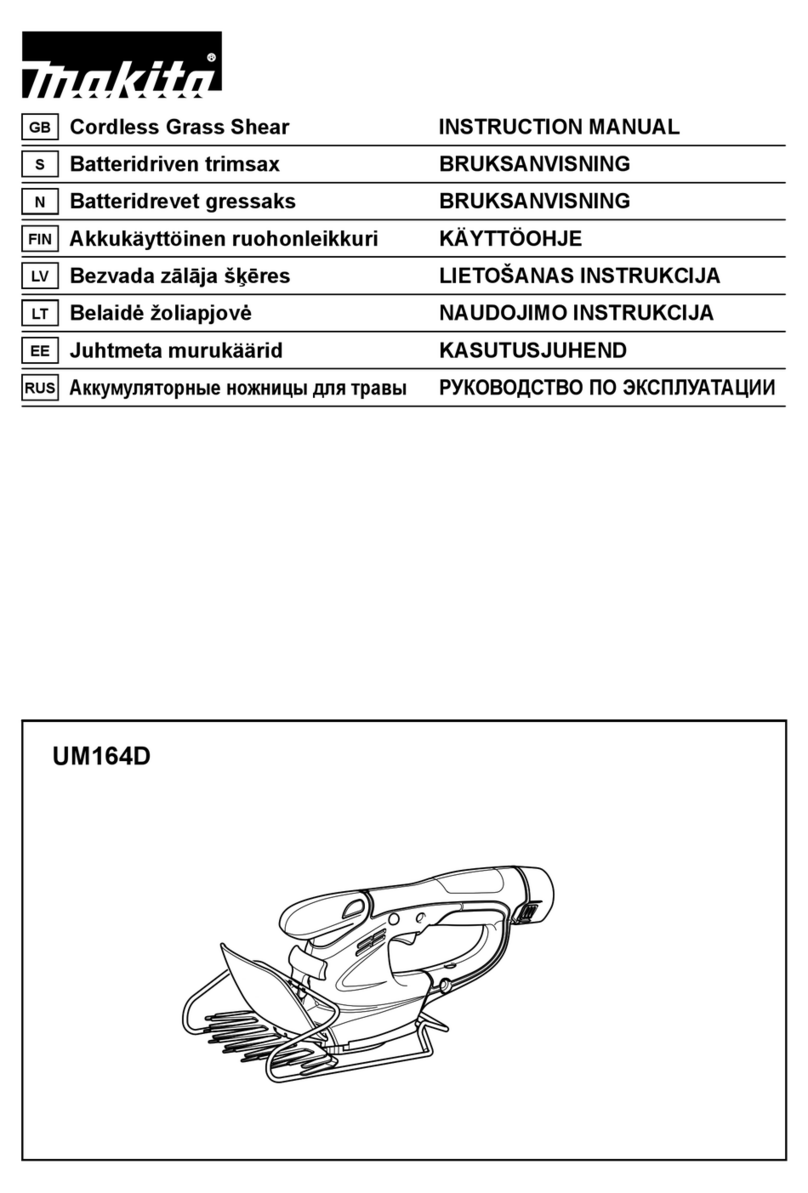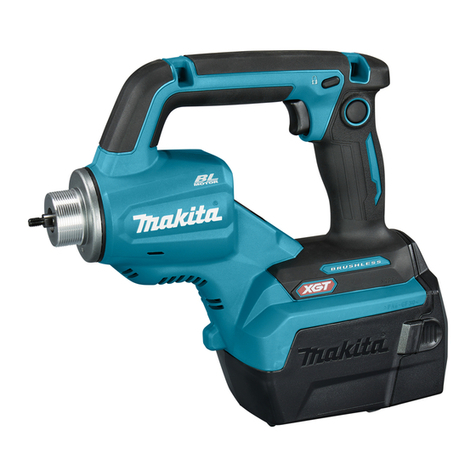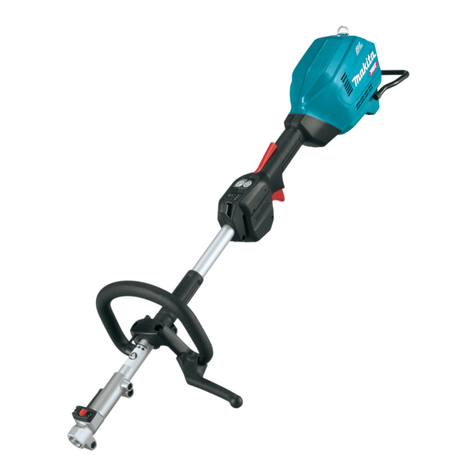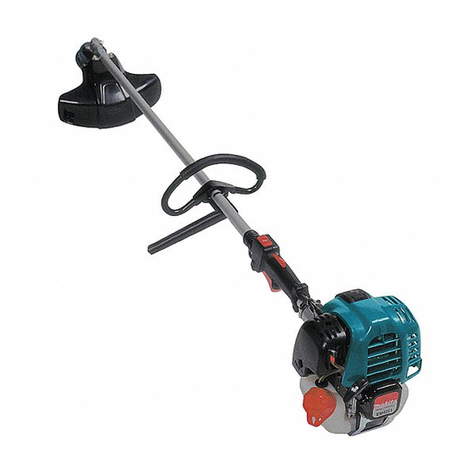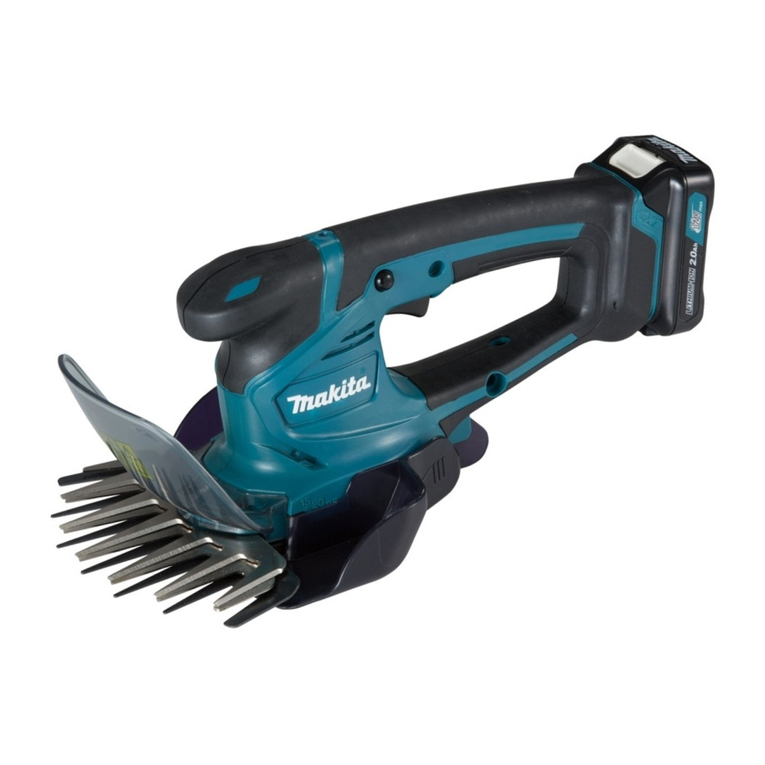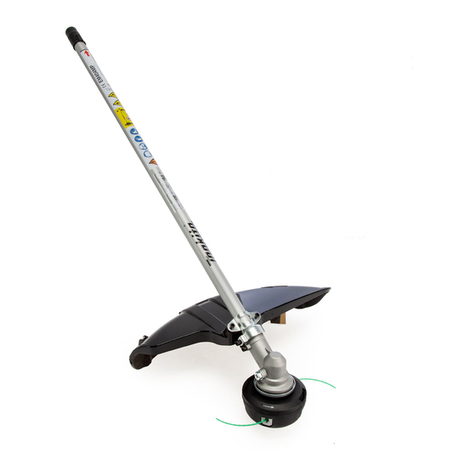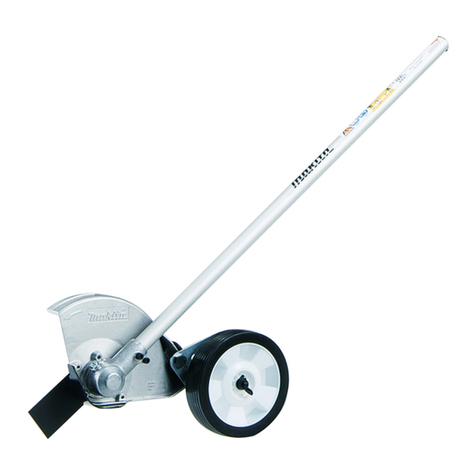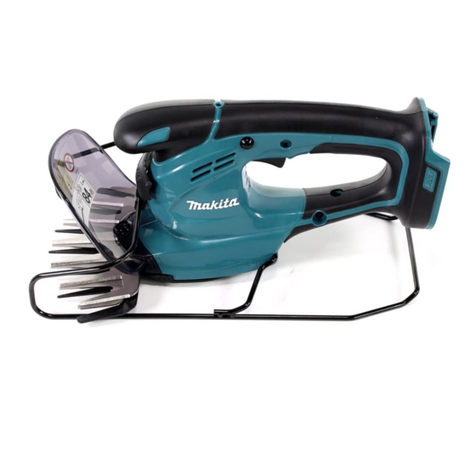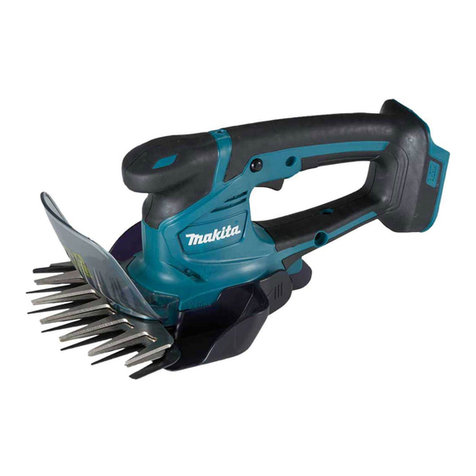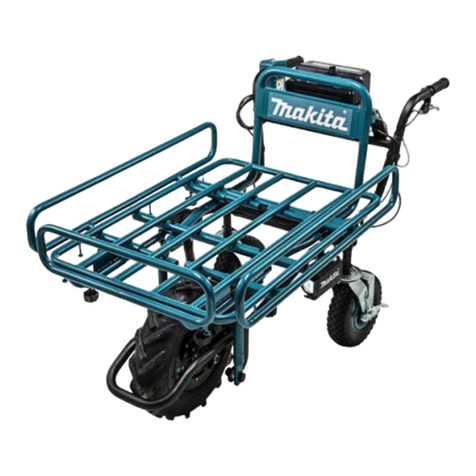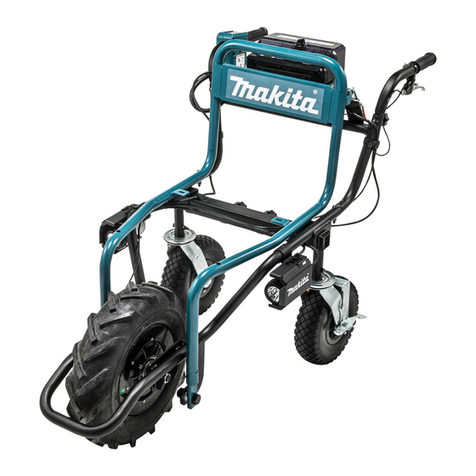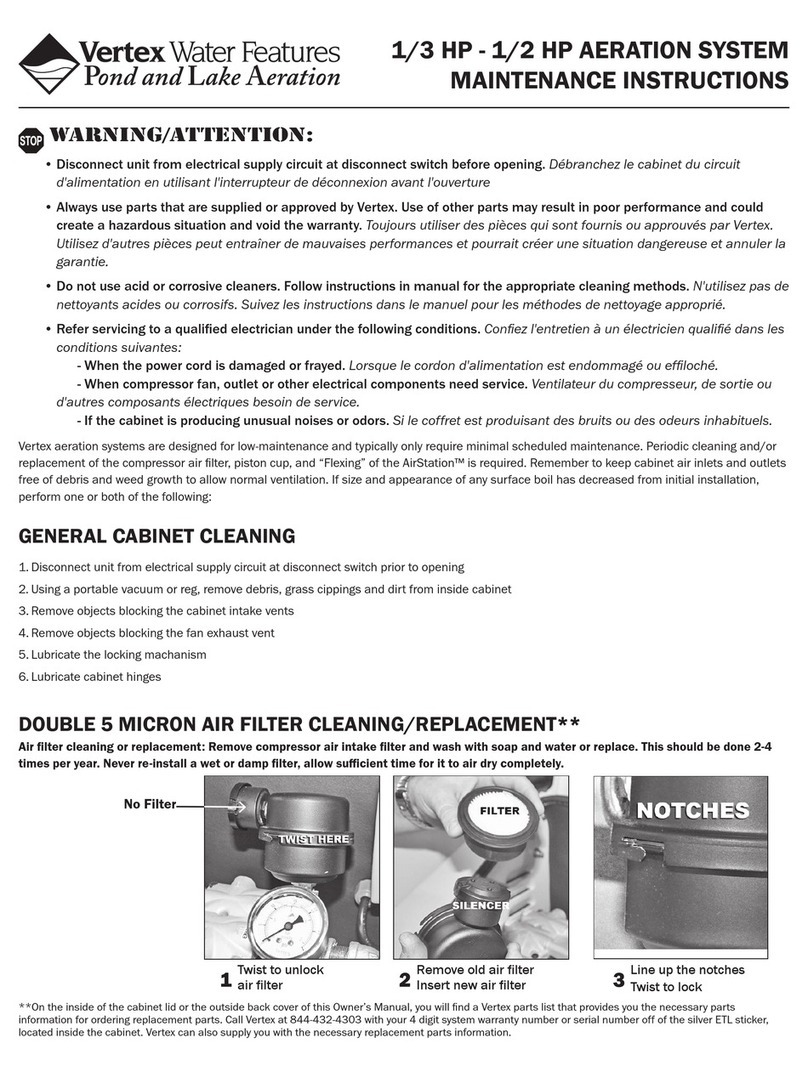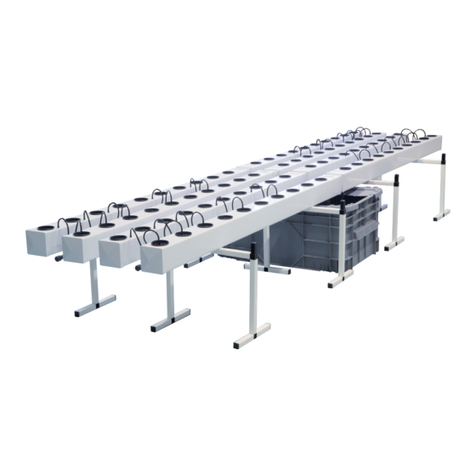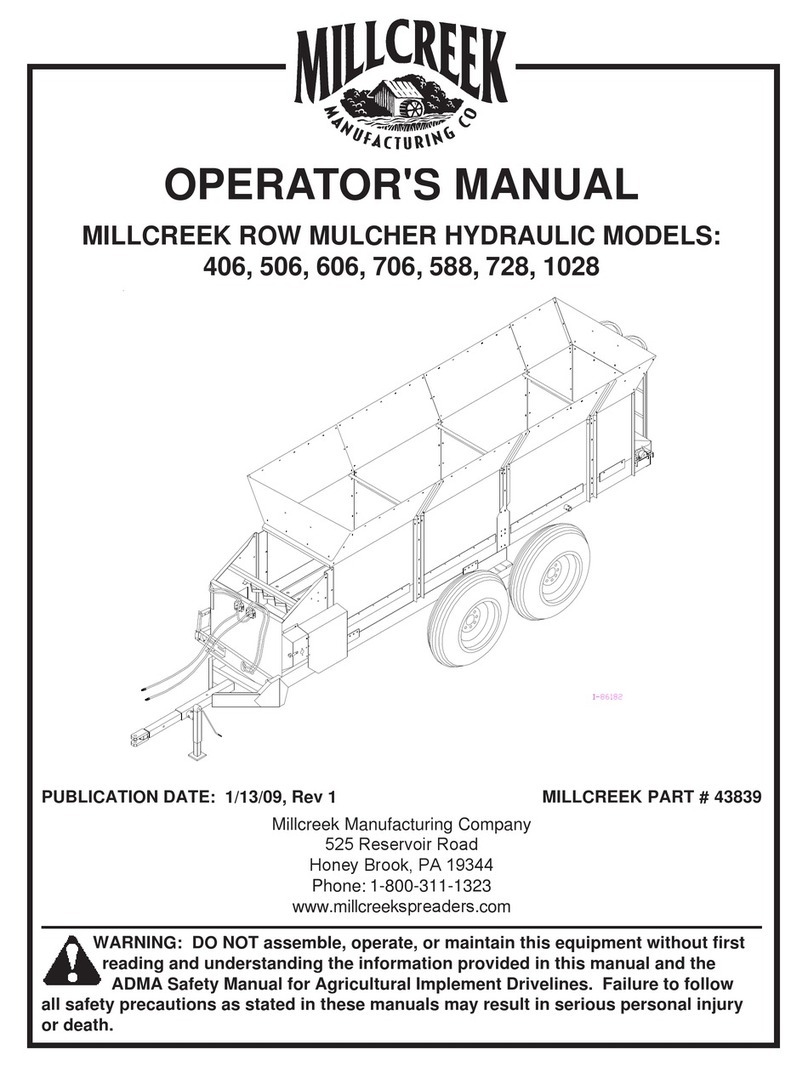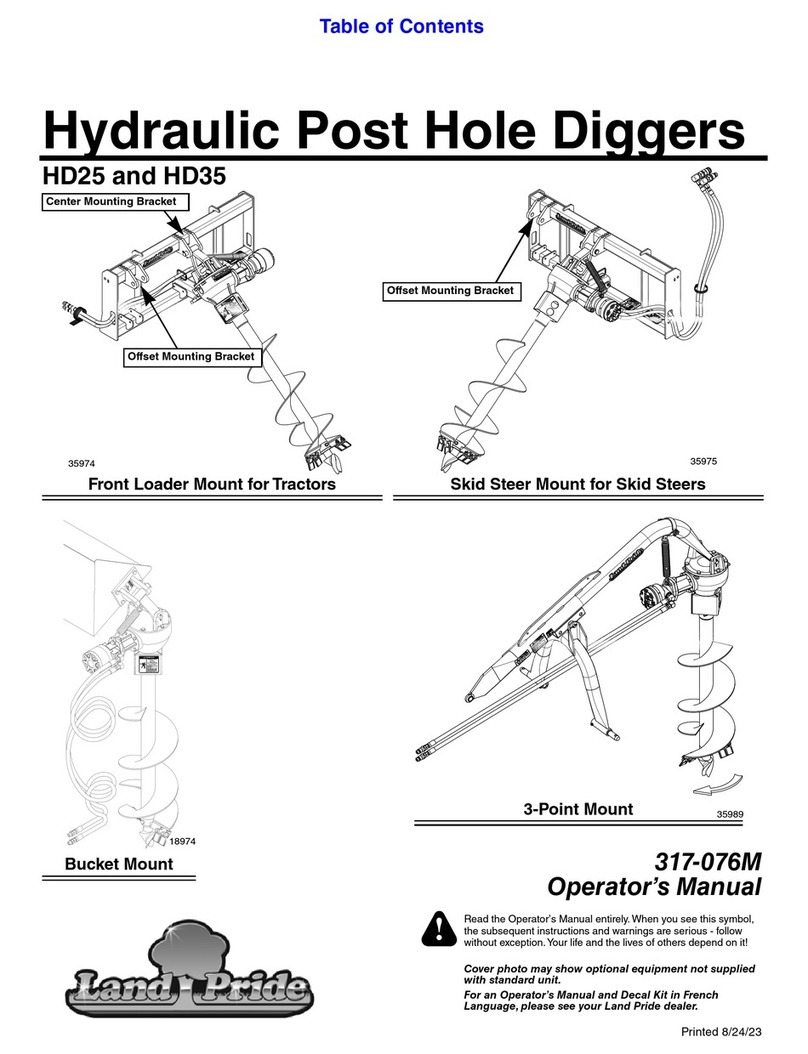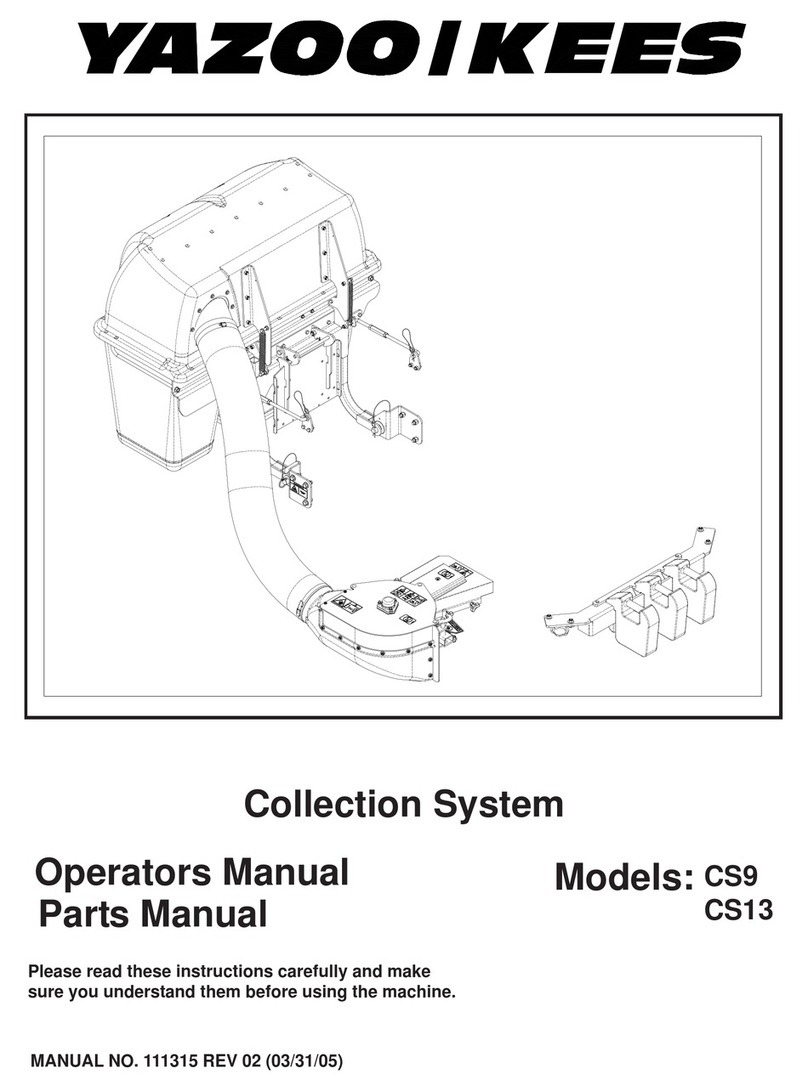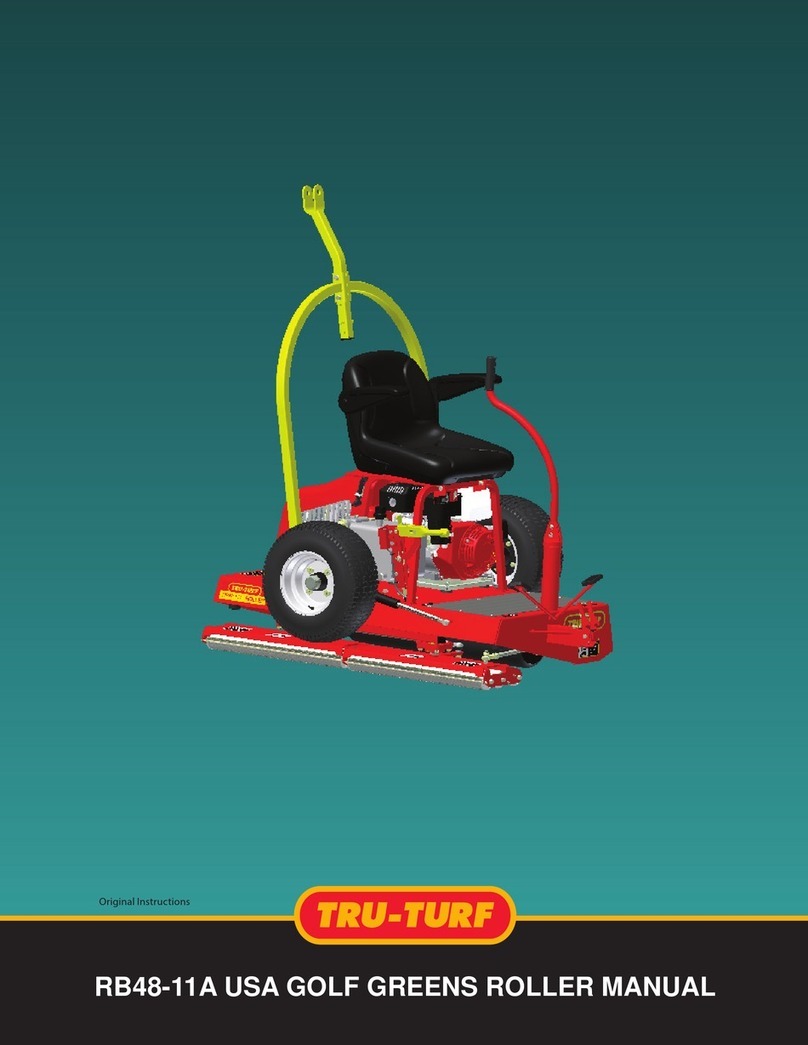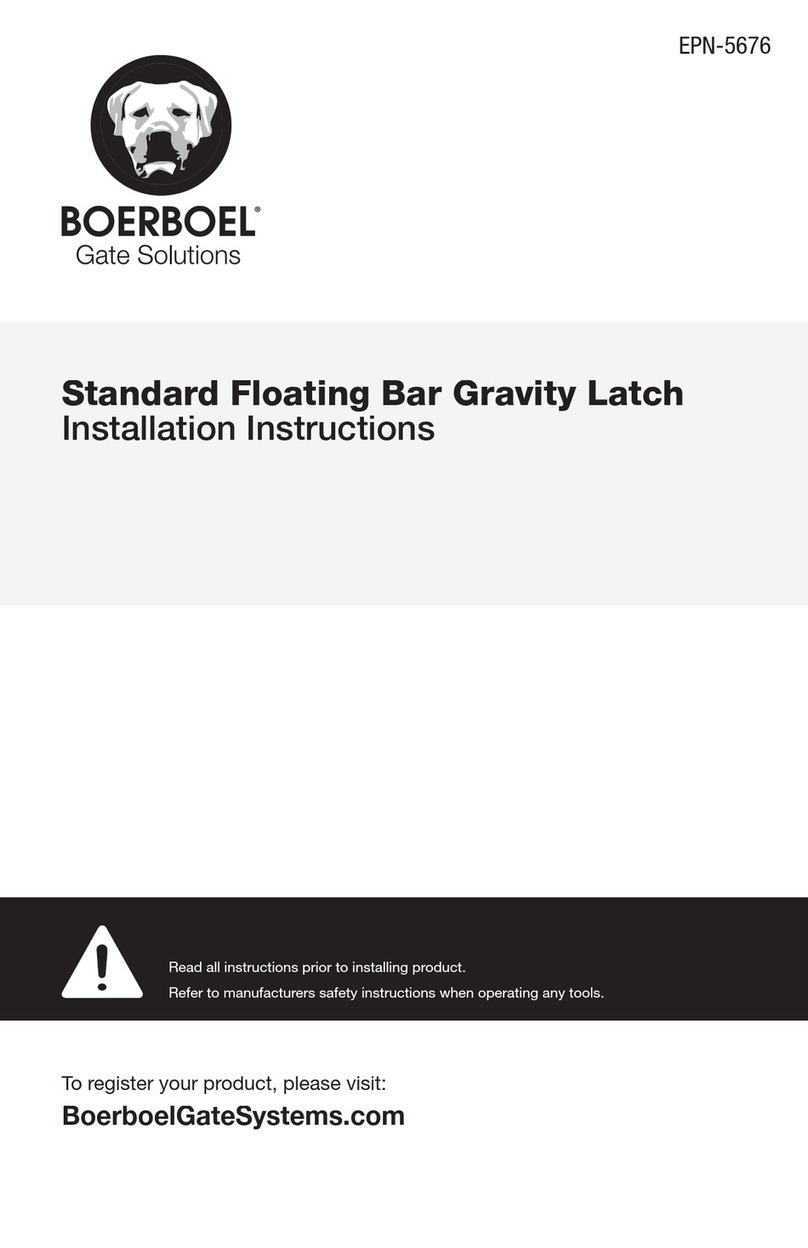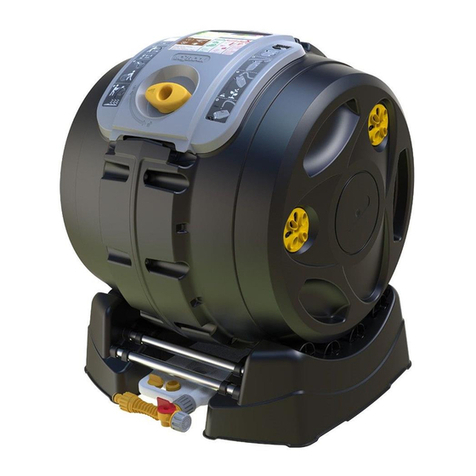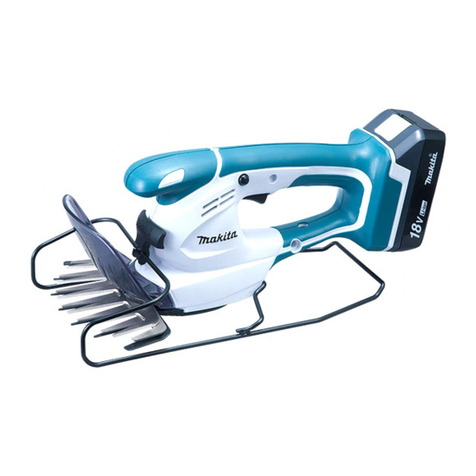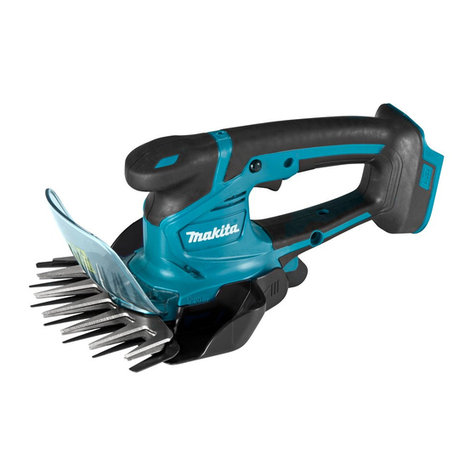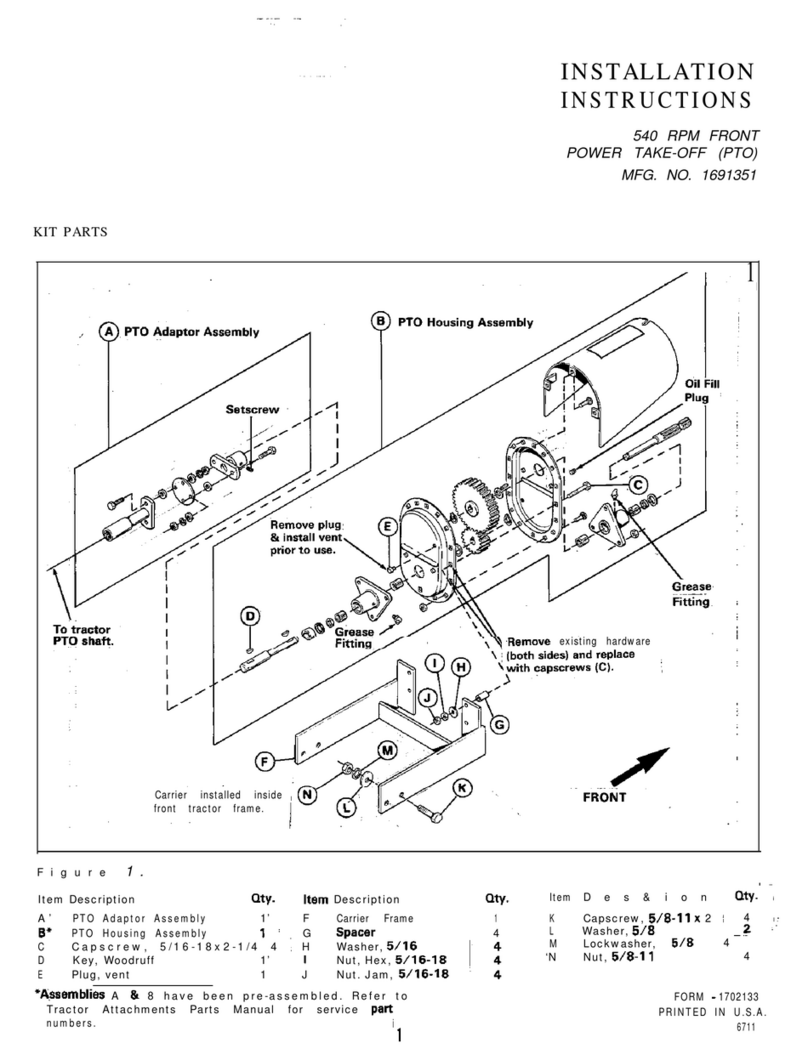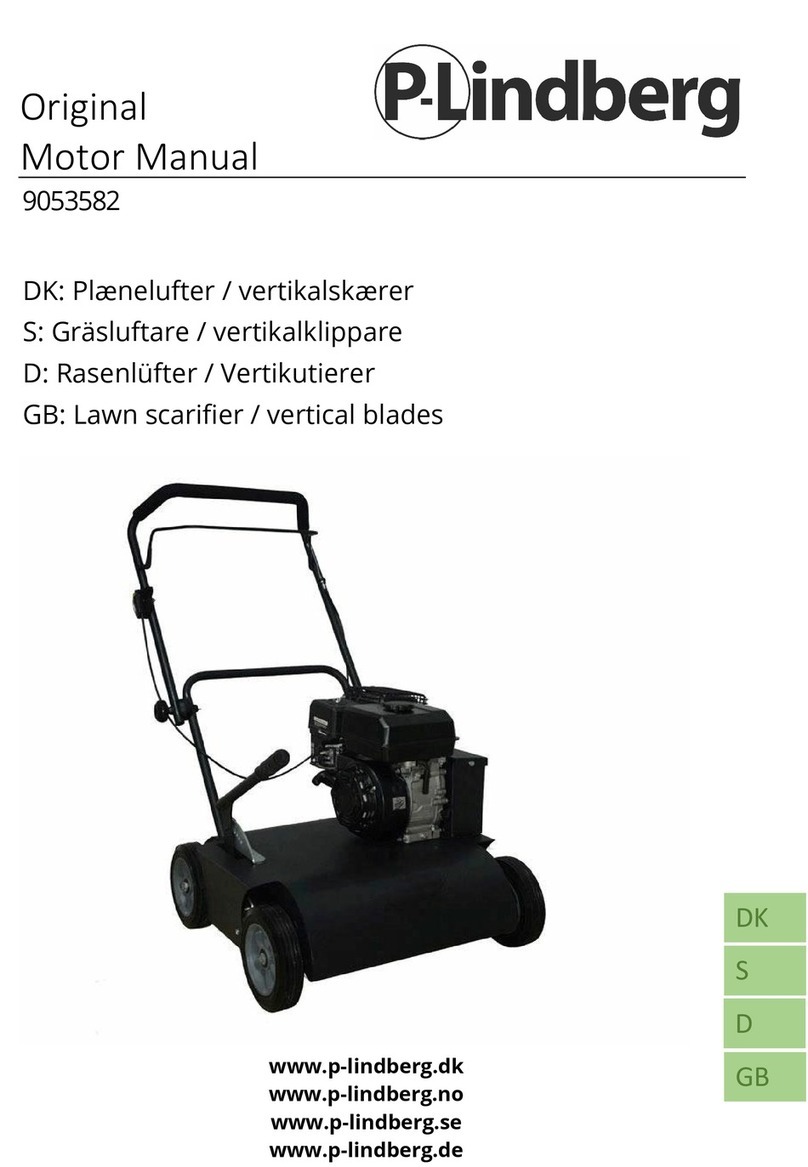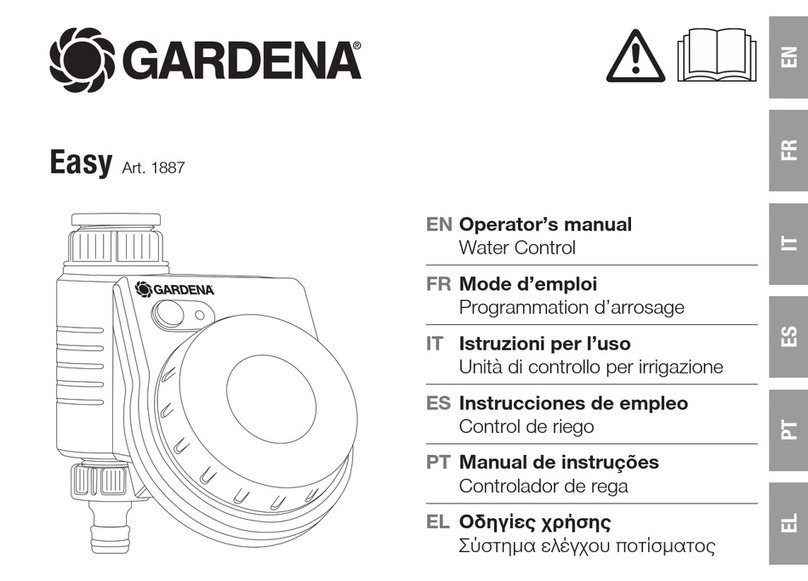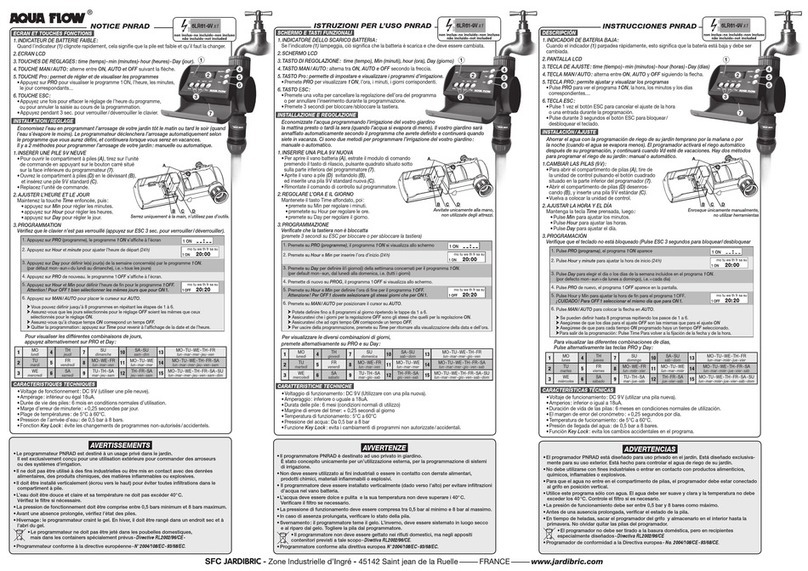
10 ENGLISH
NOTE: The declared noise emission value(s) has
been measured in accordance with a standard test
method and may be used for comparing one tool with
another.
NOTE: The declared noise emission value(s)
may also be used in a preliminary assessment of
exposure.
WARNING: Wear ear protection.
WARNING: The noise emission during actual
use of the power tool can dier from the declared
value(s) depending on the ways in which the
tool is used especially what kind of workpiece is
processed.
WARNING: Be sure to identify safety mea-
sures to protect the operator that are based on an
estimation of exposure in the actual conditions of
use (taking account of all parts of the operating
cycle such as the times when the tool is switched
o and when it is running idle in addition to the
trigger time).
Vibration
The vibration total value (tri-axial vector sum) deter-
mined according to EN50636-2-94:
UM110D with shear blade for grass shear installed
Vibration emission (ah) : 2.5 m/s2or less
Uncertainty (K) : 1.5 m/s2
The vibration total value (tri-axial vector sum) deter-
mined according to EN60745-2-15:
UM110D with shear blade for hedge trimmer installed
Vibration emission (ah) : 2.5 m/s2or less
Uncertainty (K) : 1.5 m/s2
NOTE: The declared vibration total value(s) has been
measured in accordance with a standard test method
and may be used for comparing one tool with another.
NOTE: The declared vibration total value(s) may also
be used in a preliminary assessment of exposure.
WARNING: The vibration emission during
actual use of the power tool can dier from the
declared value(s) depending on the ways in which
the tool is used especially what kind of workpiece
is processed.
WARNING: Be sure to identify safety mea-
sures to protect the operator that are based on an
estimation of exposure in the actual conditions of
use (taking account of all parts of the operating
cycle such as the times when the tool is switched
o and when it is running idle in addition to the
trigger time).
EC Declaration of Conformity
For European countries only
The EC declaration of conformity is included as Annex A
to this instruction manual.
SAFETY WARNINGS
General power tool safety warnings
WARNING: Read all safety warnings, instruc-
tions, illustrations and specications provided
with this power tool. Failure to follow all instructions
listed below may result in electric shock, re and/or
serious injury.
Save all warnings and instruc-
tions for future reference.
The term "power tool" in the warnings refers to your
mains-operated (corded) power tool or battery-operated
(cordless) power tool.
Cordless Grass Shear Safety Warnings
General instructions
1. To ensure correct operation, user has to read
this instruction manual to make himself famil-
iar with the handling of the equipment. Users
insuciently informed will risk danger to them-
selves as well as others due to improper handling.
2.
Never allow children, persons with reduced
physical, sensory or mental capabilities or lack of
experience and knowledge or people unfamiliar
with these instructions to use the machine, local
regulations may restrict the age of the operator.
3.
Use the equipment with the utmost care and attention.
4. Operate the equipment only if you are in good
physical condition. Perform all work calmly
and carefully. Use common sense and keep in
mind that the operator or user is responsible
for accidents or hazards occurring to other
people or their property.
5. Never operate the machine while people, espe-
cially children, or pets are nearby.
6. The motor is to be switched o immediately in
case that the equipment shows any problem or
abnormal sign.
7.
Switch o and remove the battery cartridge when
resting and when leaving the equipment unat-
tended, and place it in a safe location to prevent
danger to others or damage to the equipment.
8.
Avoid using the machine in bad weather condi-
tions especially when there is a risk of lightning.
Personal protective equipment
1. Wear eye protection and stout shoes at all
times while operating the machine.
2. Always wear substantial footwear and long
trousers while operating the machine.
Starting up the equipment
1.
Make sure that there are no children or other people
nearby, also pay attention to any animals in the
working vicinity. Otherwise stop using the equipment.
2.
Before use always check that the equipment is
safe for operation. Check the security of the cut-
ting tool and the guard and the switch trigger/lever
for easy and proper action. Check for clean and
dry handles and test the function of the start/stop.
